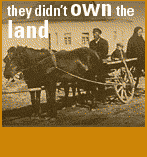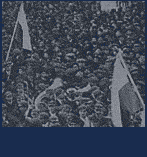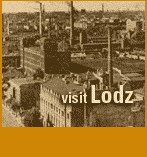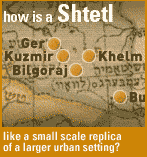

Schools


Vilna was the Ashkenazi center of education, with the most sophisticated and variegated system of schooling for both secular and religious Jews. Vilna itself contained many of traditional khadorim  for children and, as early as the 17th century, philanthropists established Talmudei Torah for the poorest of students. The region was also particularly well endowed with exceptional and famous yeshives, schools which were akin to colleges for the religious students and sages who attended them. Outstanding centers of thought and learning, the yeshives drew scholars and seekers from across the Jewish world, innovating new forms of Jewish observance and interpretation of ancient Jewish texts. So important and integral to the religious community were some of the schools that, like many secular organizations, they were evacuated out of the doom of World War II Europe to be reestablished in the safety of the New World.
for children and, as early as the 17th century, philanthropists established Talmudei Torah for the poorest of students. The region was also particularly well endowed with exceptional and famous yeshives, schools which were akin to colleges for the religious students and sages who attended them. Outstanding centers of thought and learning, the yeshives drew scholars and seekers from across the Jewish world, innovating new forms of Jewish observance and interpretation of ancient Jewish texts. So important and integral to the religious community were some of the schools that, like many secular organizations, they were evacuated out of the doom of World War II Europe to be reestablished in the safety of the New World.
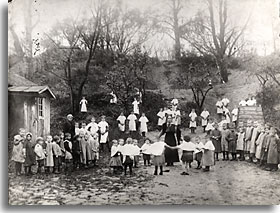

Among the most famous of the yeshives was Etz Khayim (Tree of Life), better known as the Volozhin Yeshiva. It was a great center of learning established in the town of Volozhin by Rabbi Haim Volozhiner in 1803. Rabbi Volozhiner was a great admirer of the Gaon of Vilna's movement of Mitnagdim and he established the school as a means of enticing young students away from the growing wave of Hasidism. Following the Gaon's interpretation and outlook, Volozhiner ensured that students would read the texts for their basic and literal meanings in order to truly understand the context in which they were written. A regional center for study, the Volozhin became a model for other yeshives across Eastern Europe. Encompassing hundreds of students at its height, the yeshive successfully resisted the continuous demands of Maskilim and Russian authorities to introduce secular subjects, and was only forced to close for a few years in the 1890s.


Encouraged by Volozhiner's success, Rabbi Nathan Zvi Finkel founded the Slobodka Yeshiva in 1882, in the Lithuanian town of the same name, near Kovno. Finkel was a proponent of the Musar  movement, a strict school of Mitnagdim that called for devout and literal adherence to Jewish law, especially among young yeshive scholars. During disagreements in 1897 regarding how the school should be run, the yeshive split into two: Yeshiva Kneset Israel for those loyal to Rabbi Finkel's tradition, and Kneset Beit Yitzkhak for their opponents. Kneset Israel was popular and well respected and it grew considerably during the first decades of the 20th century, at one point enrolling more than 500 students. It opened a sister school, the Hebron Yeshiva, in Hebron, Palestine in 1929. Following a massacre by local Arabs, this school relocated to Jerusalem. When the Slobodka School was finally forced to close by the Nazis in 1941, its few survivors regrouped. They eventually opened a new yeshive in Israel at Bnei Brak, near Tel Aviv.
movement, a strict school of Mitnagdim that called for devout and literal adherence to Jewish law, especially among young yeshive scholars. During disagreements in 1897 regarding how the school should be run, the yeshive split into two: Yeshiva Kneset Israel for those loyal to Rabbi Finkel's tradition, and Kneset Beit Yitzkhak for their opponents. Kneset Israel was popular and well respected and it grew considerably during the first decades of the 20th century, at one point enrolling more than 500 students. It opened a sister school, the Hebron Yeshiva, in Hebron, Palestine in 1929. Following a massacre by local Arabs, this school relocated to Jerusalem. When the Slobodka School was finally forced to close by the Nazis in 1941, its few survivors regrouped. They eventually opened a new yeshive in Israel at Bnei Brak, near Tel Aviv.


As for the progressive and secularized world of Jewish education, Vilna was the center of great innovation. Modern, Russian-leaning schools developed during the mid-19th century and the Tsar's government even sponsored a Rabbinical seminary beginning in 1847, which later became a secular teachers' seminary. Soon, both Hebrew and Yiddish schools appeared and, by 1916, Vilna had 21 Yiddish schools (with 4,000 pupils) and six Hebrew schools (with 1,600 pupils), numbers that increased during the following decades. Also in 1916, Josef Epstein, a worldly physician, taught secular Jewish courses to students in his own apartment - in Hebrew - laying the foundation for the Hebrew Tarbut system of education. That system, which soon produced a formal Tarbut Hebrew school in Vilna, brought Epstein's curriculum of Hebrew and modern subjects forward onto a much larger stage- that of the entire Ashkenazi world. The movement to create a modern Hebrew culture soon became mainstream within Jewish communities from Bilgoraj to Buenos Aires to Baltimore, and developed alongside the Zionist struggle for a Hebrew homeland.
By the late-19th century, adults also had the option of studying in vocational schools, among the most famous of which were the Vilna Technicum and the Hilf Durch Arbeit (Help Through Work) trade school, both established by Jewish philanthropists. In a community strongly unsettled by the industrialization of the economy, students could learn modern craftsmanship, mechanical trades, plumbing, sewing, drawing, and bookkeeping, and other skills that could help them rise out of poverty and unemployment.










